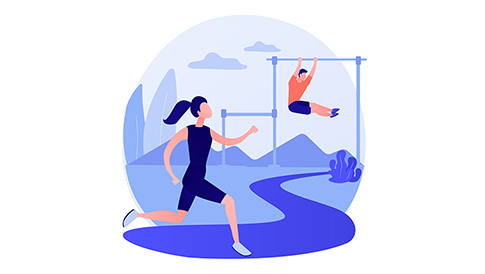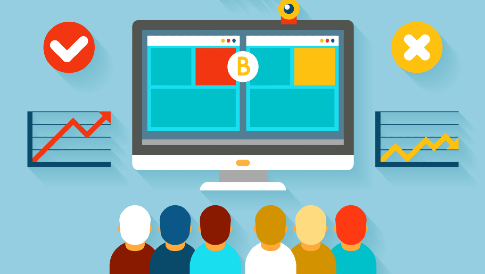The New Debate: Can AI Truly Understand User Intent in Web Design?
“Is artificial intelligence less than our intelligence?” -Spike Jonze. It’s a thought-provoking question, isn’t it? It’s also the question that serves as the centerpiece of an ongoing debate within the global tech industry. Can artificial intelligence, or AI, do things as well as humans? The answer could be clearer. Sure, AI can do certain tasks well. It’s incredibly fast at processing information and can analyze mountains of data in milliseconds, a rate much faster than any human could. But humans have emotions, creativity, and intuition. We can understand complex feelings, sense cultural shifts, and develop new ideas. When it comes to user intent in web design, the question arises: Who can better understand and cater to user intent—humans or AI? To get closer to an answer, we must first understand the rise of AI in web design.
The Rise of AI in Web Design
It’s difficult to picture the online world without AI. Over the years, it’s become integral to nearly every online experience. However, this level of AI saturation wasn’t always the norm.
It All Began with a Mouse
We can trace the history of AI back to the 1950s when the first notable AI system, called Theseus, was developed by Claude Shannon. Theseus was a remote-controlled mouse that could navigate a labyrinth and remember its path. Although quite basic by today’s standards, Theseus demonstrated humans had an early desire to build intelligent machines.
Today, AI is reshaping web design with impactful trends, including instant customer support chats that provide real-time assistance. Web designers also use AI to analyze user behavior to optimize website layouts and increase conversion rates, while AI algorithms optimize SEO strategies.
What’s in an AI Dream Team?
Today’s web designers rely on a custom stack of AI tools, which often include a selection from the following technologies.
- AI Content Generators: These tools use natural language processing and machine learning to automatically generate website content, saving time and effort for designers.
- Chatbots and Virtual Assistants: AI-powered chatbots provide instant customer support, enhance user interactions, and improve website engagement.
- Image Recognition: AI-based image recognition tools automatically tag and categorize images, improving visual content management.
- User Behavior Analysis: AI algorithms analyze user behavior patterns, providing insights that help optimize website design and content.
While AI tools enhance efficiency and productivity in web design, they may need more human touch, creativity, intuition, and empathy human designers bring. They can also face challenges in fully understanding complex details and subjective aspects.
The Concept of User Intent in Web Design
While user intent is not limited to web design, we can’t overstate its importance in this field.
Understanding User Intent
Understanding user intent means figuring out why a person visits a website and what they want to achieve while being there. User intent can take various forms and may include:
- Searching for information or answers
- Making a purchase or transaction
- Seeking entertainment or leisure
- Looking for inspiration or ideas
- Seeking solutions to problems
- Connecting with others or seeking social interaction
Recognizing and catering to user intent is vital in web design to create seamless, user-centered experiences that align with their needs and expectations.
Challenges in Decoding User Intent
Human designers face challenges decoding user intent due to its complex and subjective nature. Ambiguous search queries, different levels of explicitness, and non-verbal cues can make it difficult to understand and respond to user intent accurately. For instance, understanding whether a user wants to explore product details, make a purchase, or seek customer support requires a deep understanding of web design principles and the ability to empathize with user motivations.
The Intersection of AI and User Intent
As AI technology evolved from its humble rodent-esque beginnings, so did its capabilities in interpreting and understanding human actions. This development led to a natural intersection between AI and user intent in web design.
How AI Helps Designers Understand User Intent
AI is used in web design to understand what users want better and faster than human interpretation alone. By leveraging AI-powered chatbots, websites can engage in personalized conversations with users, quickly addressing their questions or concerns. AI algorithms analyze user behavior, enabling tailored recommendations and website enhancements that align with user preferences, ultimately improving the overall user experience.
Limitations of AI in Grasping User Intent
Even though AI has made significant strides in understanding user intent, it still has limitations. One common argument is that AI lacks human empathy, making it challenging to interpret subtle cues and emotions that influence user intent. Additionally, AI models heavily rely on historical data, potentially hindering adaptability to evolving user preferences and dynamic contexts. For instance, an AI-powered customer service system may struggle to respond appropriately to unique tones or unfamiliar situations.
The Impact on Marketing Strategies
AI’s current understanding of user intent profoundly impacts marketing strategies, particularly in the account-based marketing and lead intelligence arenas.
AI and Account-based Marketing
AI is vital in account-based marketing (ABM) by leveraging intent data in ABM strategies. With AI, marketers can analyze data to identify high-value accounts and gather insights into customer preferences. By leveraging AI algorithms, they can automate account selection, content creation, and campaign execution. This advantage optimizes the marketing process and delivers more relevant and personalized experiences. AI-driven predictive analytics also help anticipate customer needs, leading to higher conversion rates, improved engagement, and enhanced ROI in ABM.
AI’s Role in Lead Intelligence
Lead intelligence refers to valuable information about potential customers to understand their needs and preferences. By leveraging AI technology for lead intelligence, including algorithms and machine learning, businesses can gain deeper insights into customer behavior, enabling them to tailor their marketing strategies, personalize campaigns, and ultimately increase conversion rates.
The Future of AI and User Intent in Web Design
AI is here to stay and will continue to shape user intent in web design, but what can we expect in the future?
Potential Developments
AI has the potential to further enhance user experiences by offering more personalized and intuitive interactions. Some potential developments include:
- Adaptive website layouts and designs that dynamically adjust based on user preferences and behavior
- AI-driven content personalization, delivering tailored content to individual users
- Voice-based interactions and voice search optimization for seamless and intuitive browsing experiences
- AI-powered A/B testing and optimization for continuous improvement of website performance
- Intelligent customer segmentation and targeting based on user intent and preferences
- Advanced data analytics and machine learning algorithms for actionable insights and data-driven decision making
The Debate Goes on
The ongoing debate about AI’s role in understanding user intent in web design involves differing viewpoints. Some argue that AI has made progress in decoding user intent and enhancing user experiences. However, skeptics question its ability to comprehend the intricate nuances of human intentions fully. This ongoing discussion keeps us questioning and exploring the capabilities and limitations of AI in understanding and responding to user needs.
Embracing the Future: AI and Web Design’s Creative Symphony
The debate on AI’s understanding of user intent in web design continues to fuel conversations within the tech industry. While AI has shown promise in predicting and responding to user intent, limitations still must be acknowledged and addressed. MotoCMS showcases the power of blending AI tools and human creativity for fantastic web design. By discussing and exploring what AI can do, we can discover new possibilities for the future of web design.




Leave a Reply